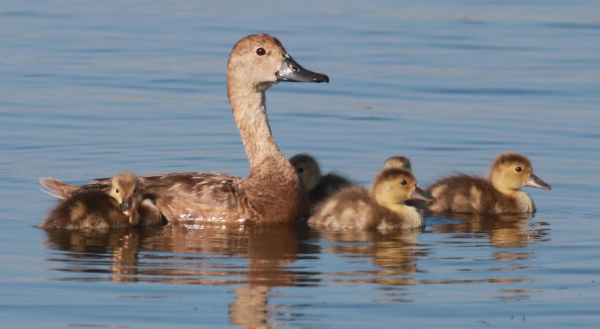
A multitude of bird species rely on wetlands for nesting and raising young, such as this Redhead with her ducklings (photo by Paul Konrad).
|
Wetlands are critical to so many species of birds nationwide and hemisphere-wide, and wetlands are especially important to people – we all rely on wetlands to reduce the chances of flooding, improve water quality, recharge ground water supplies, provide outdoor recreation, opportunities, and much more. Yet, last week the US Supreme Court removed critical protections for wetlands including marshes, ponds, swamps – self-contained basin-filled wetlands – that have been protected for more than 50 years under the Clean Water Act, a law passed by Congress in 1972 made it illegal to drain, fill, or pollute “waters of the United States” without a permit.
In a close 5-to-4 majority opinion, Justice Samuel Alito wrote that wetlands are covered by the law only if they have a “continuous surface connection” to larger water bodies, an unprecedented re-definition of wetlands. That measuring stick dictates that the Clean Water Act applies to a wetland only if it connects with a river, stream, lake, or ocean such that it is “difficult to determine where the ‘water’ ends and the ‘wetland’ begins.”
Wetland basins such as the prairie potholes, varied single basin marshes, and other wetland types are essential for a wide variety of birds, especially during the nesting and brood rearing periods, during migration stopovers, and at wintering areas. Every wetland counts, especially considering that more than half of America’s wetlands have already been destroyed.
The ruling “is devastating for wetlands and the benefits they provide to people,” noted Royal Gardner, a wetland law expert at Stetson University College of Law. Scientific improvements have made it possible to define the boundaries of almost any wetland, Gardner explained, and by Justice Alito’s reckoning, that means that only tidal wetlands and those within a river’s typical high-water mark qualify for protections. “The ‘continuous surface water connection’ requirement, has no basis in science,” he wrote.
The majority of wetlands that are now exempt from the Clean Water Act as a result of this ruling are protected only by state law, if they are protected at all, stated University of Virginia water law expert Leon Szeptycki. The only way to resolve lingering uncertainty, experts say, is for Congress to amend the Clean Water Act to more clearly protect a wider range of wetlands.
For an overview of the ramifications of Thursday’s 5-4 decision by the US Supreme Court, see the National Audubon Society’s reaction at ‘Devastating’ Supreme Court Decision Leaves Wetlands Unprotected | Audubon and the American Bird Conservancy’s article at Supreme Court Decision on Clean Water Act Is a Major Loss for Birds and People - American Bird Conservancy (abcbirds.org)